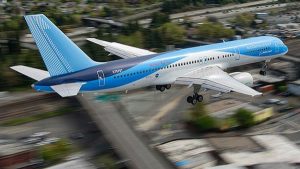 While it has not quite yet become a household item, 3D printers continue to change the way we think about manufacturing all kinds of things. And as this technology continues to improve—and get bigger and bigger—we are quickly discovering that we can actually replace traditional manufacturing processes with 3D printing and save millions of dollars in the process.
While it has not quite yet become a household item, 3D printers continue to change the way we think about manufacturing all kinds of things. And as this technology continues to improve—and get bigger and bigger—we are quickly discovering that we can actually replace traditional manufacturing processes with 3D printing and save millions of dollars in the process.
For example, when building its new 787 Dreamliner passenger airliners, Boeing has turned to 3D printers to make some of the parts. Using traditional methods, each Boeing 787 Dreamliner costs roughly $265 million to make. $17 million of those manufacturing costs is invested in strong-but lightweight titanium alloy components that support the similarly strong-but lightweight carbon fiber fuselage and wings.
Norsk Titanium has found a way to build these parts using a 3D printer, which could save Boeing an estimated $3 million per 787 Dreamliner. Indeed, just yesterday, Norsk Titanium revealed the world’s first FAA-approved 3D printed structural titanium component.
As such, Norsk Titanium President and Chief Executive Officer Warren M. Boley, Jr comments, “The Norsk Titanium team will continue to expand the portfolio of components supplied to Boeing meeting stringent certification requirements.” This, of course, could suggest that the cost savings resulting from the 3D printed parts could be just the beginning of a new era of inexpensive—but high quality—parts built better, stronger, and faster—and cheaper—than ever before.
Indeed, Norsk anticipates that the US regulatory agency will approve the material properties—and full scale production—for these 3D printed parts at some point later in the year. This, says Norsk Titanium vice president of marketing Chip Yates, will “open up the floodgates” for massive production and millions in savings.
